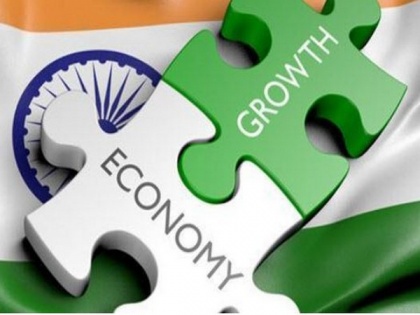S&P lowers India FY22 GDP growth forecast to 9.5 pc
By ANI | Published: June 24, 2021 12:02 PM2021-06-24T12:02:12+5:302021-06-24T12:10:03+5:30
S&P Global Ratings on Thursday revised its GDP growth forecast for India to 9.5 per cent for the fiscal year ending March 31, 2022 due to a severe Covid-19 pandemic wave.

S&P lowers India FY22 GDP growth forecast to 9.5 pc
S&P Global Ratings on Thursday revised its GDP growth forecast for India to 9.5 per cent for the fiscal year ending March 31, 2022 due to a severe Covid-19 pandemic wave.
It had earlier projected a growth rate of 11 per cent.
The Indian economy contracted by 7.3 per cent in fiscal 2020-21 as the country battled the first wave of Covid-19 as against a 4 per cent growth in 2019-20.
The Reserve Bank of India has also cut the growth forecast to 9.5 per cent for the current fiscal from 10.5 per cent estimated earlier.
However, S&P said Asia Pacific region's recovery is mostly on track. Early stumbles during the vaccine rollout are giving way to redoubled efforts to vaccinate and open up.
"The constraint remains domestic demand, especially private consumption," said Shaun Roache, Asia Pacific chief economist at S&P Global Ratings. "External demand is robust and this has helped lift manufacturing investment."
Patchy performance in the second stage of the pandemic means the region's recovery will remain unbalanced for a while longer.
Exports are contributing to some upward revisions to our growth forecasts for 2021, but as many trading partners reopen and consumers spend more on services, the impulse from exports will wane.
Private consumption is exerting a drag and while an improvement is expected in the next few quarters, much depends on the pace of vaccine rollout.
S&P's expectation is that reaching key vaccination thresholds -- especially the 70 per cent level identified by the World Health Organisation -- will determine how quickly consumption rebounds.
For China, South Korea and Singapore, this may come in the third quarter. Australia and Japan should follow, perhaps in early 2022, while the emerging market economies will lag.
S&P said gaps between activity and the pre-pandemic trend also suggest that the rise of inflation across the region is for the most part transitory.
Strong demand for durable goods globally should ease as economies reopen and people are able to spend on services, from hotels to restaurants.
This effect has been powerful. For example, while overall real household spending in Korea was still soft in the first quarter, spending on durables such as laptops and washing machines was 25 per cent above trend.
The passthrough from inflation in producer prices (including commodities and raw materials) to consumer prices has been weak in Asia Pacific and S&P expects it to remain so.
The main reason is that with private consumption and services activities still soft, demand for labour is weak and firms will not need to hike wages to attract or retain staff.
"With labour costs accounting for a large share of final consumer prices, soft job markets should keep a lid on inflation," said Roache. "There are exceptions where labour markets are tightening much more quickly, such as Australia."
Low domestic inflation should mean central banks keep policy rates low, but an uneven global recovery will make life difficult for some emerging markets. The Federal Reserve recently upgraded its growth and inflation forecasts and brought forward its calendar for hiking interest rates.
For emerging markets, this is a double-edged sword because faster global growth could be accompanied by rapid exchange rate depreciation as interest rate expectations elsewhere re-price higher.
A final key assumption is that oil price increases will moderate, and on average, prices will be about 10 per cent lower in 2022 compared with the second half of 2021. Combined with the washing out of base effects, this will ease upward pressures on inflation.
"We forecast regional growth of 7.1 per cent in 2021, slightly lower than our 7.3 per cent projection in March," said S&P.
The changes include China forecast now a higher 8.3 per cent on accelerating vaccinations. Trade is boosting Hong Kong, up 2.3 percentage points to 6.5 per cent.
Australia revised up to 4.9 per cent (from 4 per cent) as the labour market roars back. A strong tech sector boosts Taiwan forecast to 5.6 per cent (from 4.2 per cent) even with setbacks on the pandemic front.
Japan reduces to 2.5 per cent as private consumption remains soft. Other Covid-related downward revisions include Malaysia, Thailand and the Philippines.
( With inputs from ANI )
Disclaimer: This post has been auto-published from an agency feed without any modifications to the text and has not been reviewed by an editor
Open in app